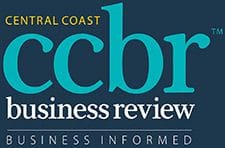Local economy needs attention

This month CCBR starts a new segment, the Central Coast Economy.
Going back ten years and beyond the Hunter Valley Research Foundation produced a half yearly Economic Indicators for the Central Coast.
It ran from 1993 until the newly elected Liberal Government stopped funding it. In the Hunter it is now run by the University of Newcastle and funded by business and local councils and quarterly economic reporting continues very valuable service for that region.
The Central Coast Economic Update Breakfasts (and the Hunter as well) were well attended by the region’s business leaders and politicians.
On the Central Coast both Gosford and Wyong Councils pulled out and subscribe to a service provided by .id the population experts.
The economic data provided by .id is excellent and valuable except that no one, apart from a few council staff, know about it.
The Economic Indicators provided trends across a range of demographic and economic parameters for the region that showed where we were heading, apart from where we had been.
It was a fantastic tool to hold government to account as well as to promote the region to investors.
While .id provide this excellent data there is no attempt to try and interpret it and draw conclusions as to where the regional economy may be going. In the past economists from HVRF provided this overview and the reputation they had for understanding the regional economies was exemplary.
CCBR has decided that the data provided by .id is too valuable to remain hidden away and will now produce a quarterly review of the Central Coast economy based on data provided by .id.
After all we as ratepayers are paying for this information which council keeps close to its chest, assuming they read it. Certainly, our Suspended Councillors never have.
OOO
This month we focus on the region’s Gross Regional Product (GRP), Population and Employment as well as the number of businesses on the Central Coast and what they do. See Pages 14 and 15 for a full report.
Gross Regional Product is the amount of the region’s wealth which is generated by businesses, organisations and individuals working in the area. It is a broad indicator of the growth or decline of the local economy over time.
Over the past 10 years the Central Coast’s GRP has increased by 13.9%.
This compares with Greater Sydney with an increase of 28.8% and NSW of 22.7%.
The extent to which COVID-19 affected these results is unknown but would be relevant compared with Greater Sydney and NSW as a whole.
In any event the Central Coast economic growth is running at around half that of NSW.
Population growth is lagging the Central Coast Growth Plan 2016-2036 that sees population increasing from 339,500 in 2016 to 415,000 in 2036 an increase of 75,500 people.
To achieve this by 2036 annual growth will need to be 1.00% per annum. Growth in the first five years is running below the target.
Employment is another issue which we cover as well as delving into the number of businesses we have and how many are non-employing businesses.
Our politicians should take note. However, regional economies are driven by local government with the support of state government.
Under our amalgamated Central Coast Council we have gone nowhere for the past six years. While the Council may be broke there is no reason to discourage investors,
It costs nothing to approve development applications that will result in more employment and more rates being paid.
Council’s new CEO, David Farmer starts in April. He has a mammoth task ahead of him.
But it can be done.
Edgar Adams
Editor
| Posted in: Editorial |


